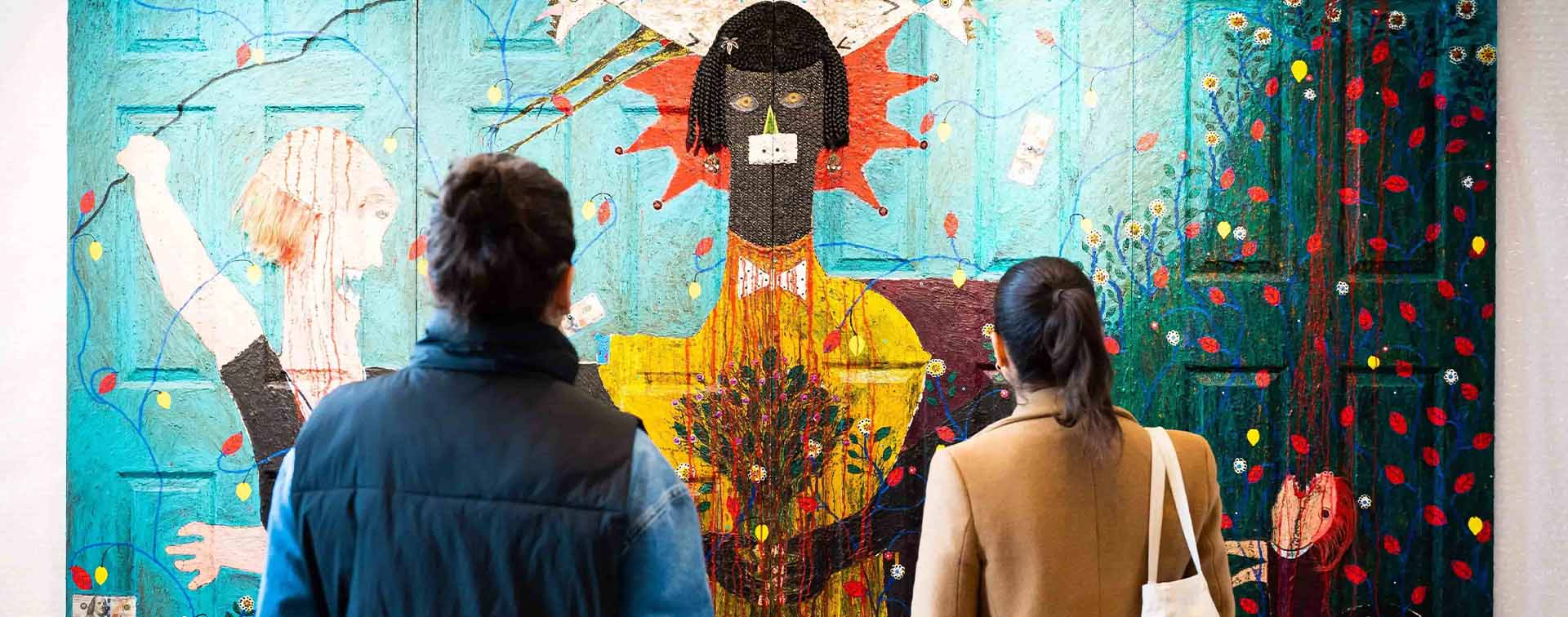
Touria El Glaoui is the Founder of 1-54 Contemporary African Art Fair.
In recent years, the African art market has gone through a remarkable transformation, emerging as a vibrant and dynamic sector that attracts both international and continental collectors.
Within the contemporary African art market, it is challenging to define one single ‘African aesthetic’ — we are talking about 54 different countries after all. The continent covers over 800 languages, and creative influences extend beyond Africa, existing within an abundance of sensibilities, artistic and historical experiences, and so on. This is exactly the draw of African art: its rich tapestry of cultures and artistic expressions. From traditional sculptures and textiles to avant-garde installations and digital artworks, the continent's heritage is reflected in an incredible kaleidoscope of narratives and perspectives. When we’re talking about collectors, they are drawn to the authenticity of African art. By offering a window into the sometimes complicated history of the continent, contemporary African art is rapidly changing people’s perceptions and simultaneously unveiling a new identity.

Driven by increasing global interest and demand, the African art market has witnessed significant growth over the last few years. Notably, 1-54 Contemporary African Art Fair has observed a remarkable 20–25% increase in visitors since its pre-pandemic fairs, highlighting the enthusiasm people have for African art. Artists have shown incredible untapped potential. Among the best-performing African artists we showcased this year are Amoako Boafo, Ghizlane Sahli, Barthélémy Tougo, Reggie Khumalo, Joana Choumali, Girma Berta, Prince Gyasi, and Tesfaye Urgessa. These artists represent a diverse range of styles, mediums, and cultural perspectives, contributing to the vibrancy and dynamism of the African art scene.
High- and ultra-high-net-worth individuals are increasingly turning their attention to African art. With a focus on diversification, they are seeking out unique and culturally significant artworks from the continent. Moreover, interest from wealthy new generation collectors is reshaping the dynamics of the market. Unlike previous generations, younger buyers approach art not just as an asset class but also as a means of cultural exploration and expression. These young collectors are more inclined to discover new artists and emerging trends, seek out affordable art by using digital platforms, and explore art that converges between fashion, technology, and other mediums. Their insightful taste and adventurous spirit present new opportunities for collaboration within the African art sector.
Collectors and art enthusiasts alike are recognizing the more meaningful side of supporting the arts as a means of empowerment and social responsibility — while often noticing the direct impact of African art and how it supports cultural preservation, community development, and social empowerment. These factors altogether address a severely underfunded and underrepresented sector in the continent. Each purchase has the power to challenge stereotypes, reshape narratives, and amplify marginalized voices.
Despite steady growth, the contemporary African art market still represents less than 1% of the total global art market. This potentially places Africa as the final frontier within the art market landscape. Excitingly so, opportunities in collaborative initiatives and partnerships are driving innovation and growth in the African art ecosystem, creating opportunities for education, public engagement, and infrastructure development. Further opportunities lie in media and other platforms such as digital landscapes for art sales and exhibitions, media channels focused on African art and culture, and physical infrastructure such as museums, galleries, studios, and art hubs. Supporting these areas encourages the development of the art ecosystem and facilitates greater accessibility and visibility for artists, which ultimately contributes to the expansion and sustainability of the market.
As the African art market continues to evolve, it offers a wealth of opportunities for both collectors and cultural enthusiasts. Art lovers can engage with diverse cultures, support emerging talent, and contribute to positive social change. By embracing the cultural richness and artistic innovation of the continent, individuals have the opportunity to unveil a new identity of Africa and, as a result, make a meaningful impact on communities across the continent and beyond.